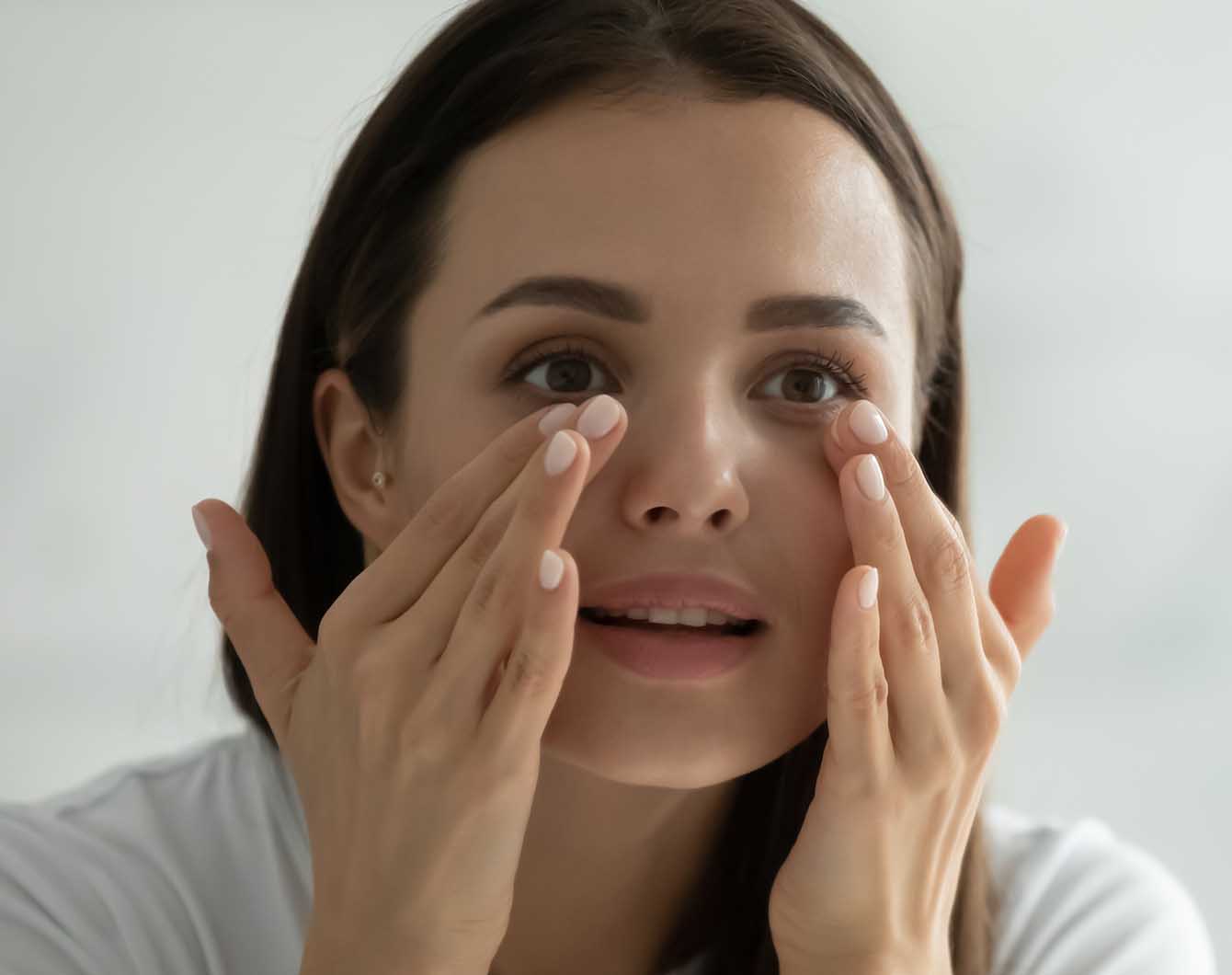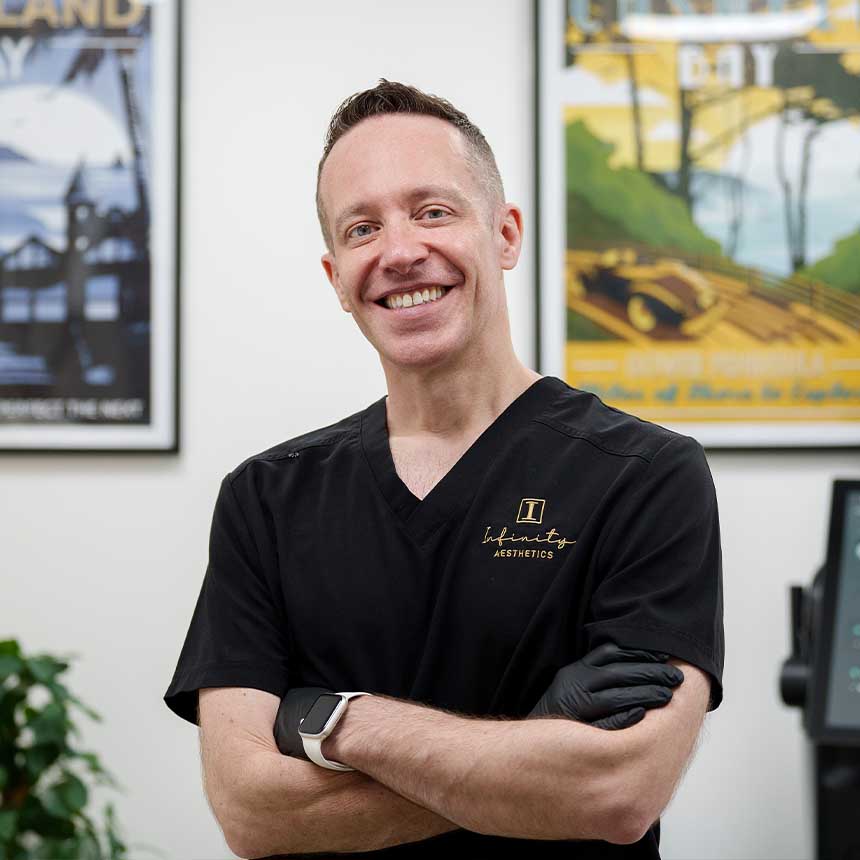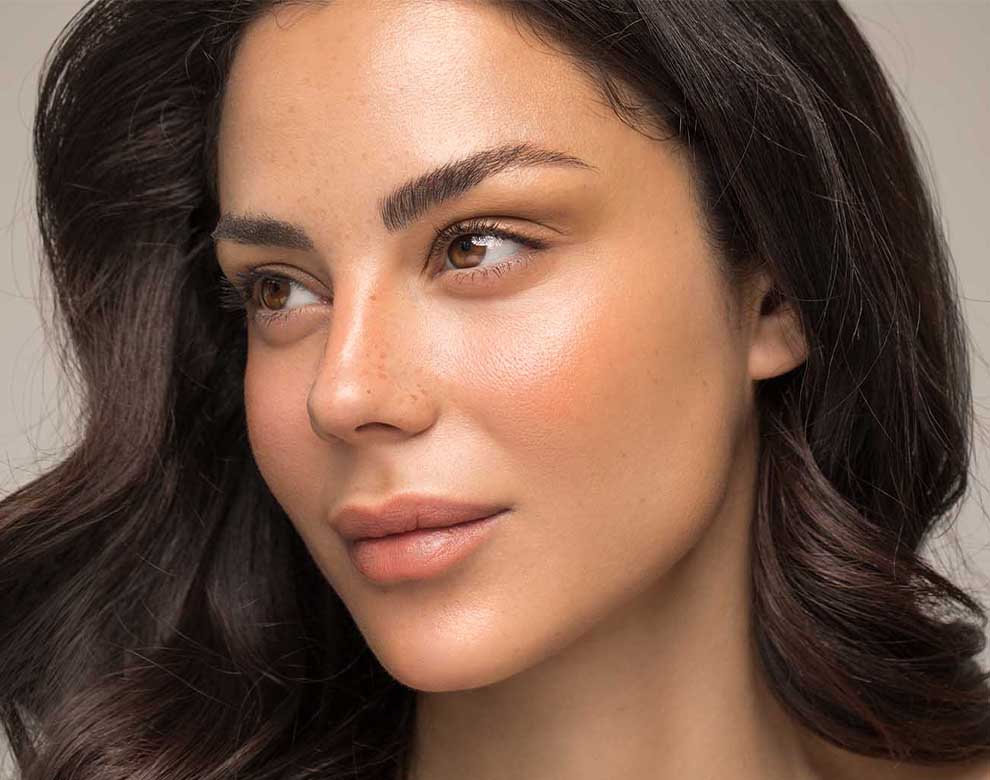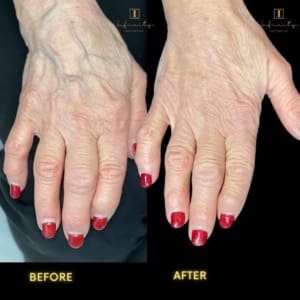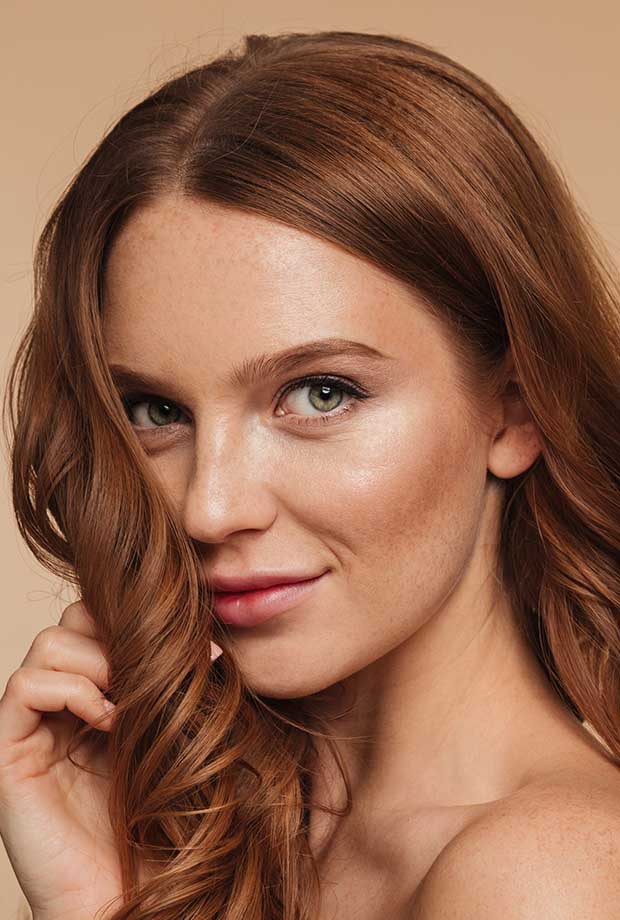What is the Difference Between Eye Bags and Tear Troughs?
There are many different names for the skin around your eyes. Terms such as under-eye, eye bags, and dark circles can all be used interchangeably online, in magazines, and on social media. This makes it challenging to determine which aspect of your eye area needs aesthetic treatment.
Read this simple guide to learn the differences between eye bags and tear troughs, and what treatments can be used for each to help rejuvenate your eyes.
So, what is the anatomy of your under-eye? The under-eye, as a generalised anatomical term, is your tear trough. This area is highly susceptible to change with age, which is where terms such as dark circles and eye bags come from.
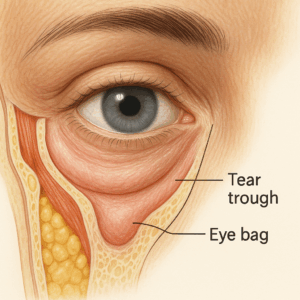
At Infinity Aesthetics, we provide top-quality aesthetic treatments, including under-eye filler. Read on to explore further differences between tear troughs and eye bags, along with treatment plans available from our London and Swansea Practices!
What is a Tear Trough?
Your Tear Trough is the space between your upper cheek and lower eyelid, also known as the hollow of your eye. This hollowness increases with age as your tear trough naturally loses volume.
A hollow tear trough can result in a tired, aged look. The severity of tear trough deterioration is most commonly genetic. Other factors, such as fat loss and skin laxity, can also affect your tear-trough’s appearance.
How to Treat Tear Trough Hollowing
Treatments for tear troughs can restore volume and refresh your appearance, which makes it a common aesthetic practice. Treatments can include dermal fillers, typically made of hyaluronic acid, amongst other ingredients. (Hannan)
Under-eye dermal fillers are a relatively safe procedure and are less invasive compared to tear trough surgeries.
Along with any aesthetic practice, there are risks. Before you proceed with arranging your tear trough filler, be sure to read the government’s full guide on licensing of non-surgical cosmetic procedures in England, here.
For further information on the dermal tear trough filler that we offer, read our detailed blog here.
Infinity Aesthetics proudly holds a five-star rating on Google. Read our testimonials written by first-hand customers here.
“Dr. Owen was very helpful and gave me all the information I needed to make a decision on what treatment to have. I had a very good experience, and after my treatment, I hardly had any redness. I am very happy with the result and can’t wait to do the second session!” – AT
How to Fix Hollowed Tear Troughs Naturally
As a first step, it is always beneficial to try non-invasive treatments. Skin care ingredients such as hyaluronic acid and caffeine can help by minimising puffiness and increasing your under-eye hydration and brightness.
Things you should know about Tear Trough Filler
Before any treatment, a consultation must be carried out by a medical professional to ensure that under-eye filler is the correct treatment for you.
As you would find with any aesthetic procedure, there are risks that come along with under-eye filler treatments, such as bruising and swelling, and less commonly skin discolouration and filler lumping. Read our helpful blog for more information.
Side effects are generally mild when it comes to tear trough fillers, as hyaluronic acid is a natural substance; swelling is common, with occasional redness.
Before your procedure, Dr. Thomas will go through the treatment and aftercare in great detail and will highlight the side effects to look out for.
Dr. Owen Thomas at Infinity Aesthetics is a highly trained aesthetic physician with a level 7 qualification in injectable treatments. Dr Thomas has also attended a masterclass with the renowned Dr Uche – the “tear trough king”.
For more information, book a consultation with Dr. Thomas here.
What are Eye Bags?
Eye bags, or Periorbital puffiness, can mean very different things. Natural shadowing, a change in pigmentation or loose skin can all be referred to as eye bags and can be seen at any age. The severity of eye bags is genetic, but they most commonly appear as you get older. (Boyd)
What Causes Eye Bags?
There are several factors that can contribute to eye bags, some of which are relatively easy to fix.
Oedema (Swelling of the under-eyes)
Oedema is a result of fluid pooling. This can occur from hormonal changes or even eating salty foods.
If you think you have Oedema, cut down the salty foods, and this can reduce it considerably.
Fat Build Up
Eye bags can also be caused by a buildup of excess fat, making the eyes look puffy. This type of eye bag is most commonly genetic and shows in older people. It can, however, also show in individuals who lack sleep.
If you think your eye bags are fat build-ups, try getting some more sleep as a first step.
Sagging Eye Bags
Sagging eye bags are often found in individuals with loose skin elasticity as their natural collagen production decreases. It can also be the result of weakened muscles and thinner skin. Again, most commonly found in elderly people.
For eye bag sagging, try collagen-boosting products.
How to Minimise Eye Bags
These three steps can help minimise your eye bags dramatically, simply by altering your routines:
- Getting more sleep
- Reducing the amount of salt consumed
- stopping smoking
Facial massages focusing on lymphatic drainage can help minimise the appearance of your eye bags. Using a Gua-Sha tool at home is a great step to add to your routine! Read this helpful blog by Healthline for more information.
Products such as eye creams containing caffeine can help alleviate dark circles and give you a brighter complexion. Eye products which focus on firming and lifting the skin can also be great for preventing any sagging.
Cold compresses and staying hydrated are some quick fixes, too!
If you have tried these and they haven’t worked, then dermal fillers are the next step. Book your consultation today!
Dermal Filler for Under Eyes
When your eye bags are just too stubborn to reduce naturally, dermal fillers can help to solve the problem.
This is where some of the confusion between eye bags and tear trough hollowing comes from, as both are treated with dermal fillers, but in different ways:
Lost volume can be replenished by using under-eye dermal fillers. Lines and wrinkles can be smoothed out by plumping the skin with dermal filler ingredients such as hyaluronic acid.
What is The Difference Between Tear Troughs and Eye Bags?
To summarise, tear trough hollowing and eye bags are pretty much the opposite of each other. Eyebags sit slightly further down the face, just above the cheekbone, and tend to have a puffy appearance. Whereas tear troughs sit in the crease just below the undereye, more towards the centre of the face, with a more hollow appearance. Although the appearance and treatments of the two can look and seem similar, the location of the issue is the main factor that differentiates the two.
For further information on the different aesthetic procedures we offer at Infinity Aesthetics, read our related blogs:
- Can Filler Remove Dark Circles?
- How Does Dermal Filler Stay In Place?
- What Causes Facial Volume Loss?
FAQs
How Much Does Tear Trough Filler Cost?
Typically, 0.5 – 1 ml of filler is needed on each side initially; this depends on the severity of hollowing and therefore differs from individual to individual. A starting price you can expect from Infinity Aesthetics is around £400. Download our price list here.
How Long Do Tear Trough Under-Eye Fillers Last?
On average, you can expect dermal fillers to typically last around 9-12 months, although this can be more for some individuals.
Individual factors that can affect the longevity of your tear trough filler can include age, skin type and metabolism.
Who isn’t a good candidate for Tear Trough Filler?
All candidates for tear trough filler must be 22 years old as a minimum. If you have very thin skin or extremely deep tear troughs, it may not be possible to proceed with treatment. Medical conditions such as severe skin allergies, active skin infections or blood conditions can also inhibit treatment for some.
How To Tell if Eye Bags are Fluid or Fat
Fluid buildup can fluctuate in size more often throughout the day, and they are also located above any dark circles. Fat bags, on the other hand, sit below dark circles, on the upper part of the cheekbone and disappear when lying down.
An easy way to work this out is to record yourself shifting your vision from straight ahead to upwards. Notice whether your eye bags become more pronounced when looking upwards. If so, this is due to orbital fat.
Otherwise, your eyebags could be oedema; shifting your gaze does not cause a change in appearance.
What Is The Main Cause of Under Eye Bags?
Age is the main cause of under eye bags. Your body and skin are always changing, and that isn’t something to be ashamed of. Simply getting older is the main factor contributing to your eye bags. If your skin is a concern and you would like to look into aesthetic practices further, don’t hesitate to contact our friendly team, who are more than happy to help!


